We vacationed in Maine last month and included one fiber-related stop in our itinerary. Just up Route 1 from Camden is the headquarters of Swans Island Blankets. Twenty years ago, John and Carolyn Grace moved to Swans Island, off the Maine coast, to make blankets from the wool of hardy island sheep.
The new setting (since 2003) in Northport is idyllic, the sheep there are welcoming and the beautiful handwoven summer- and winter-weight blankets and scarves are artfully displayed. Swans Island is a recipient of a Smithsonian Blue Ribbon for Craft. The wool is hand dyed, using only natural materials; all weaving and finishing is completed on site — though most of the sheep remain on the Island.
The rare wool and equinox blankets are made from wool of naturally brown and black sheep. The blankets, throws and scarves are trimmed in silk. You can view the works online http://www.swansislandblankets.com/— and don’t miss an opportunity to visit.

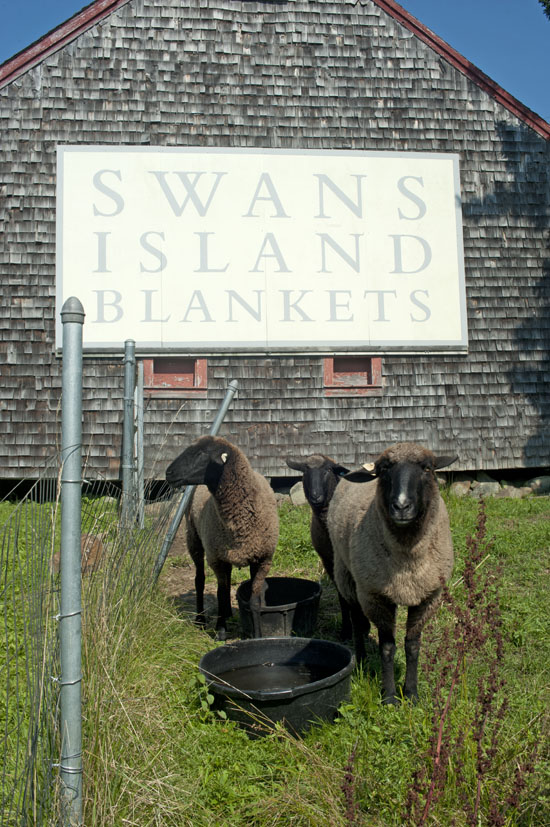
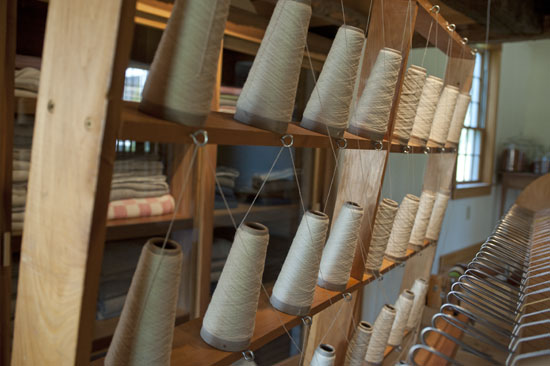
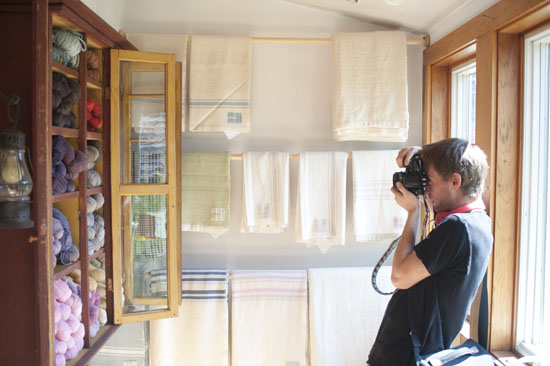

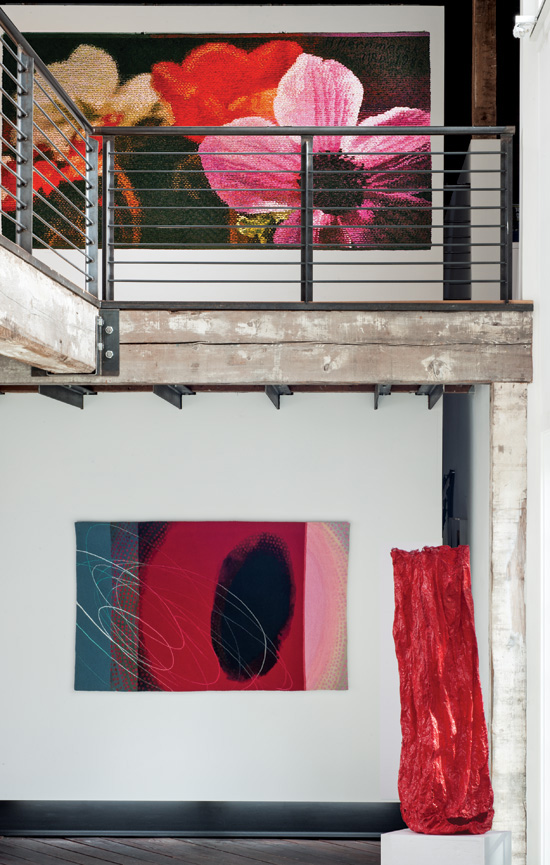
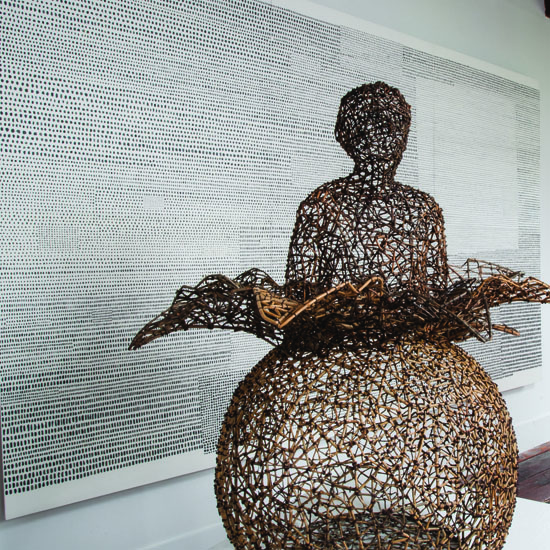
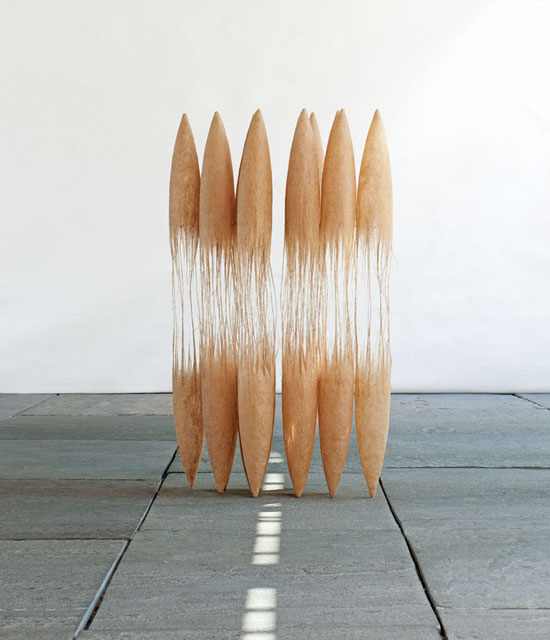
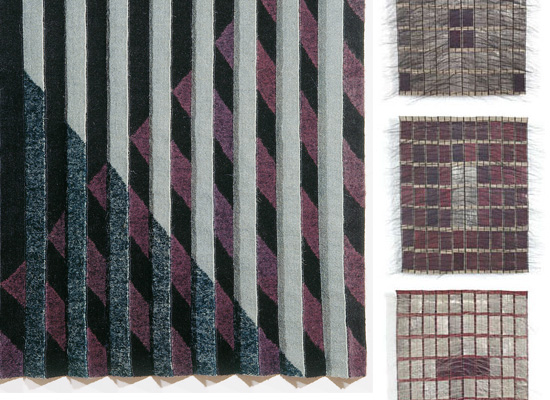
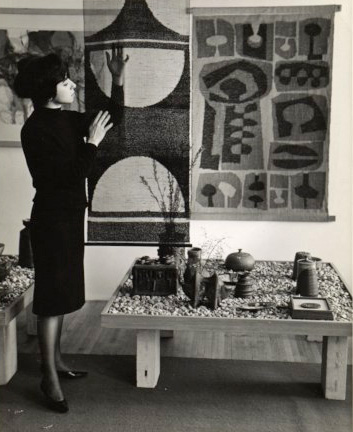

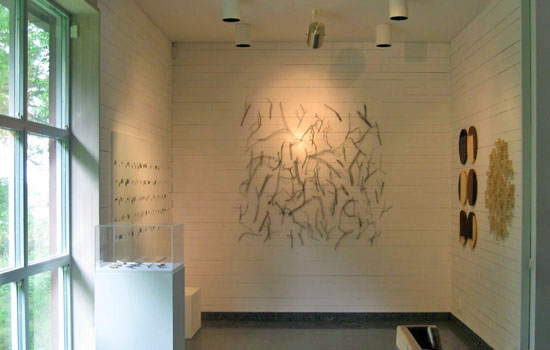


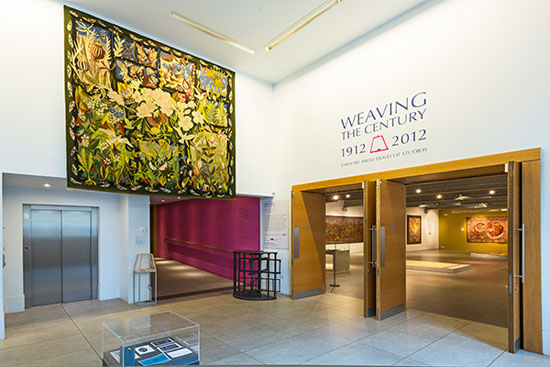

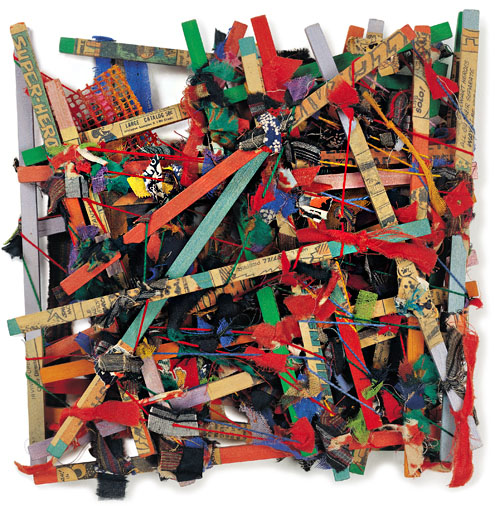
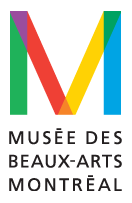



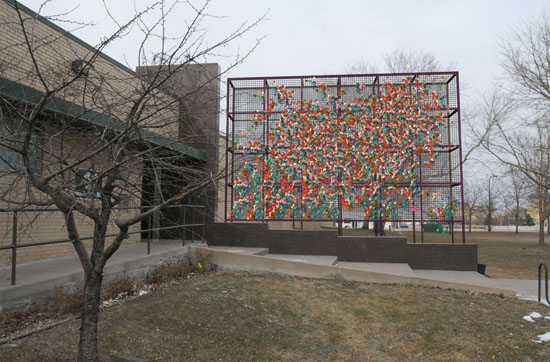
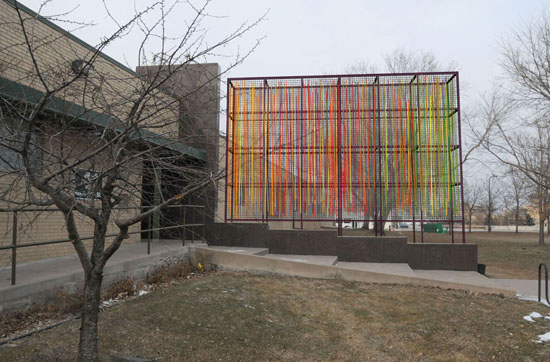
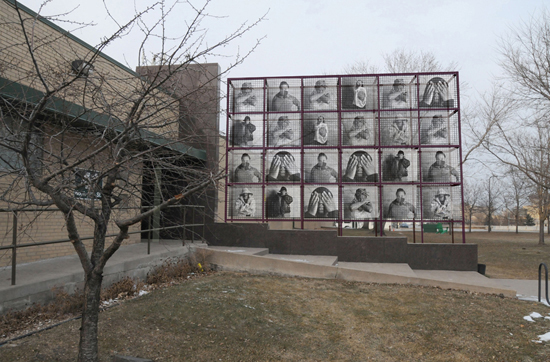
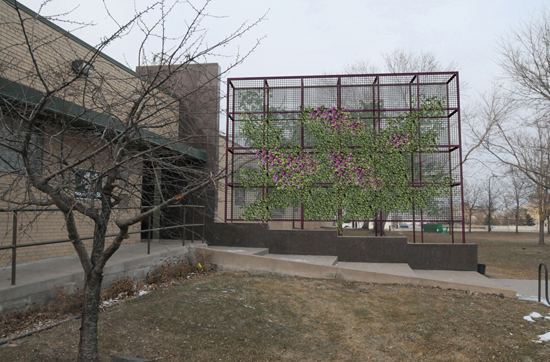
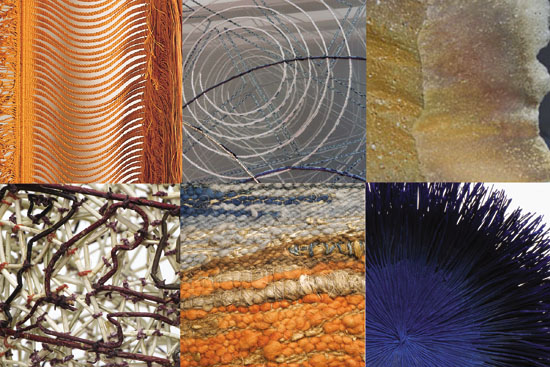
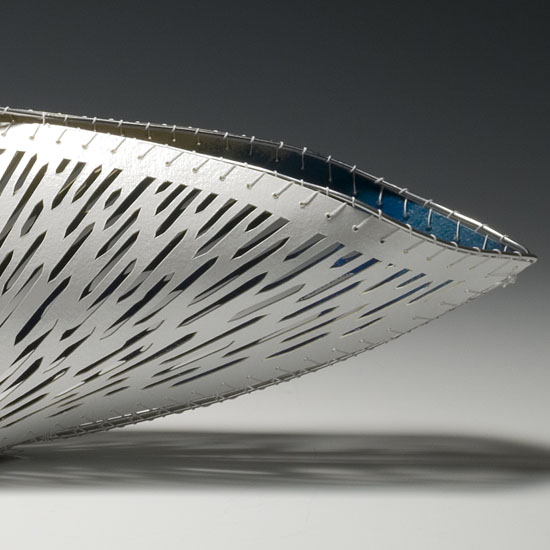
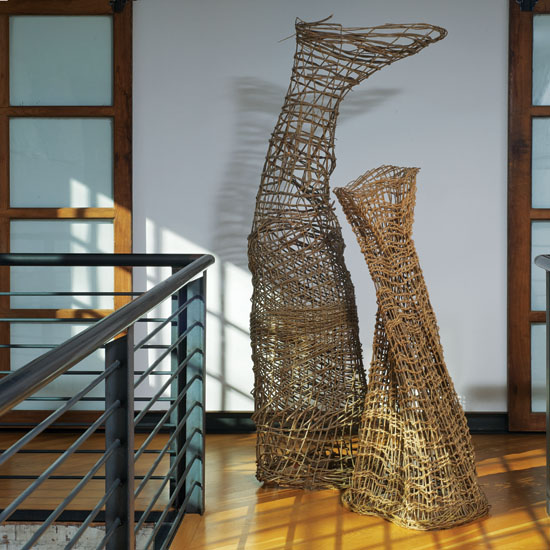
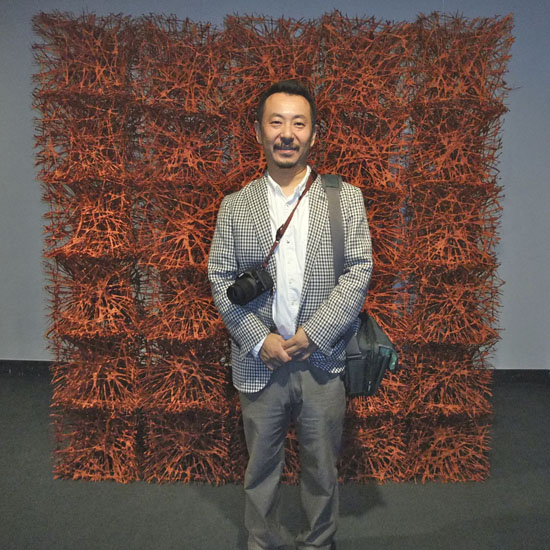

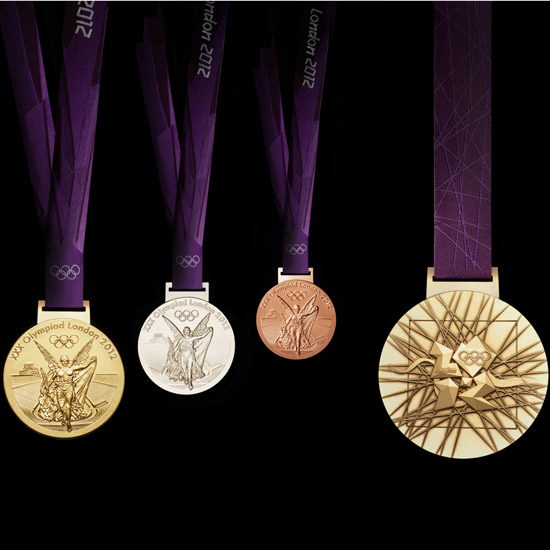
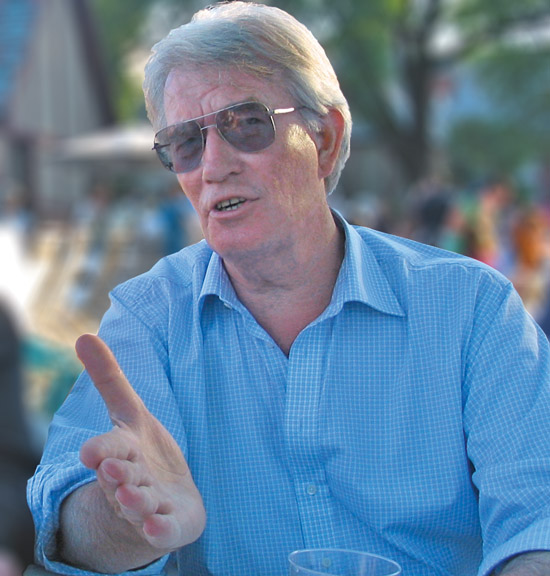
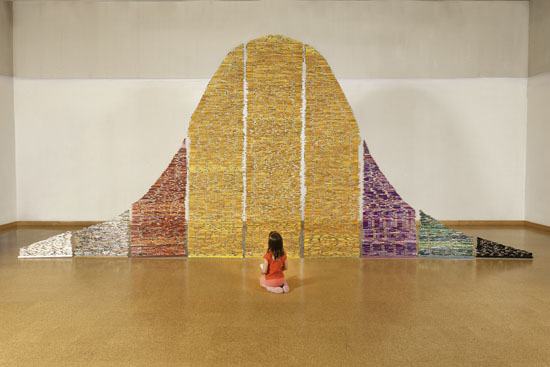
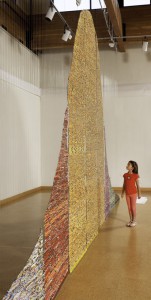

Process Notes: On Paper and Pages – Wendy Wahl
Wendy Wahl talking about her works after her talk at the Flinn Gallery
Last month, Wendy Wahl spoke to a group at the Flinn Gallery in Greenwich, Connecticut at the Paperworks: material as medium exhibtion about her recent works and installations made of re-purposed encyclopedias. Here are some excerpts from Wahl’s remarks:
REBOUND: FROM E/H Wendy Wahl discarded/deconstructed/ restructured encylopedia pages , blackened old elm barn beam 27″ x 27″ x 13″, 2009
“My daily walk in the woods allows me the quiet opportunity to hear the sounds of the trees, to see a segment of something larger and profound. Those walks provided the time and space I needed to figure out what the next series of pieces were going to be. It became apparent to me that the materials I needed to use should be familiar and abundant. In 2006, I participated in a group show titled Not Quite Natural, this was the first time I used the pages or leaves of books as a material to create an object. The exhibition was at the Wheeler School Gallery, an ideal setting to present art that is inspired by the concept of how we learn. “Stand for Knowledge” is constructed from pages of discarded New American Encyclopedias whose text I blackened with India ink. Each form stands on a base made from a recycled 200-year-old elm barn beam that has been blackened.”
9ww #502, Wendy Wahl, seven pieces, paper, yarn,95″ x 60″ x 36″, 2001-2002, photo by Tom Grotta
“Originally, I was most interested in the process. I didn’t necessarily need to know what the outcomes would look like only that I had to do it and I wanted to work the material in three dimensions. Sometimes, it is in the act of making the parts where the inspiration resides; knowing there is a mystery of what is about to unfold. Earlier pieces were suspended by monofilament, just kissing the platform, swaying ever so slightly.“
Wendy Wahl works on her installation “Uncovered Grove” at Newport Art Museum. The show will run through February 3, 2008. (photo by Jacqueline Marque)
“In 2007, Curator Nancy Grinnell invited me to have an exhibition at the Newport Art Museum. I created Uncovered Grove. I was seduced by the idea of making a body of work that considered the association between the tree of life and the tree of knowledge. The intention was to describe the relationship of our natural and cultural realms in an attempt to understand the sources and structures that bind us together. I am a fan of Pablo Neruda’s poetry and in his last book of Questions he asks, “What did the tree learn from the earth to be able to talk to the sky? And Why did the tree undress itself only to wait for the snow?”
“A journal entry from Ralph Waldo Emerson dated November 2, 1833 clearly says the unsayable: “Nature is a language, and every new fact that we learn is a new word; but rightly seen, taken all together, it is not merely a language, but the language put together into a most significant and universal book. I wish to learn the language, not that I may learn a new set of nouns and verbs, but that I may read the great book which is written in that tongue.”
8ww #77 Wendy Wahl paper, 29″ x 40″ x 15″, 2001-2002, photo by Tom Grotta
“In 2009, Tom Grotta called me up and said, the installation work is very nice, but do you think you cam make something to hang on a wall in a room rather than something that requires the whole room to hold the piece. And with that nudge I embarked on making a series of pieces on panel with frames using encyclopedias and dictionaries. “
25ww REBOUND DIPTYCH Wendy Wahl, Encylodpedia Britanica mixed editions, 2; 28″ x 18″ panels, 2010, photo by Tom Grotta
“They are somewhere between sculpture, collage and paintings. I see them as landscapes. They are constructed from hundreds and hundreds of scrolled pages glued to the surface of a wood panel.”
26ww Seeds(of knowledge) WB vol.18/19, Wendy Wahl, World Book encyclopedia pages on inked panel, 21.25″ x 34.25″ x 1.625″, 2011, photo by Tom Grotta
“When WS Merwin was US poet laureate, I was inspired by his poem Unchopping a Tree and would recite it aloud prior to working on these 4’x4’ panels. It begins: Start with the leaves, the small twigs and the nests that have been shaken, ripped or broken off by the fall; these must be gathered and attached once again to their respective places, And ends: But there is nothing more you can do. Others are waiting. Everything is going to have to be put back.”
Branches Unbound Wendy Wahl’s installation at the Grand Rapids Art Museum
“This work is part of an ongoing experiment and series that uses the potency of printed text. I’m using a cultural artifact as my material for many of reasons that include the meanings that it carries, its unique physical qualities, and to recognize its symbolic status. By restructuring familiar elements that in a particular format belongs to a collective consciousness, I’m commenting on an aspect of our station in time.”
Wendy Wahl discussing her works at Paperworks: Material as Medium at the Flinn Gallery photo by Tom Grotta, courtesy of browngrotta arts
“I am often asked why paper? I began using paper as more than a substrate because of its beauty and mystery. It can be permanent or transient, delicate or strong, cheap or expensive, abundant or scarce. It can be cut, bent, folded, crumpled, twisted, torn, glazed, waxed, pulped or burned. Paper can go from two to three dimensions in unexpected ways. It can be preserved or returned to the earth. It is probably one of the most important technological developments that affected the course of human history.”